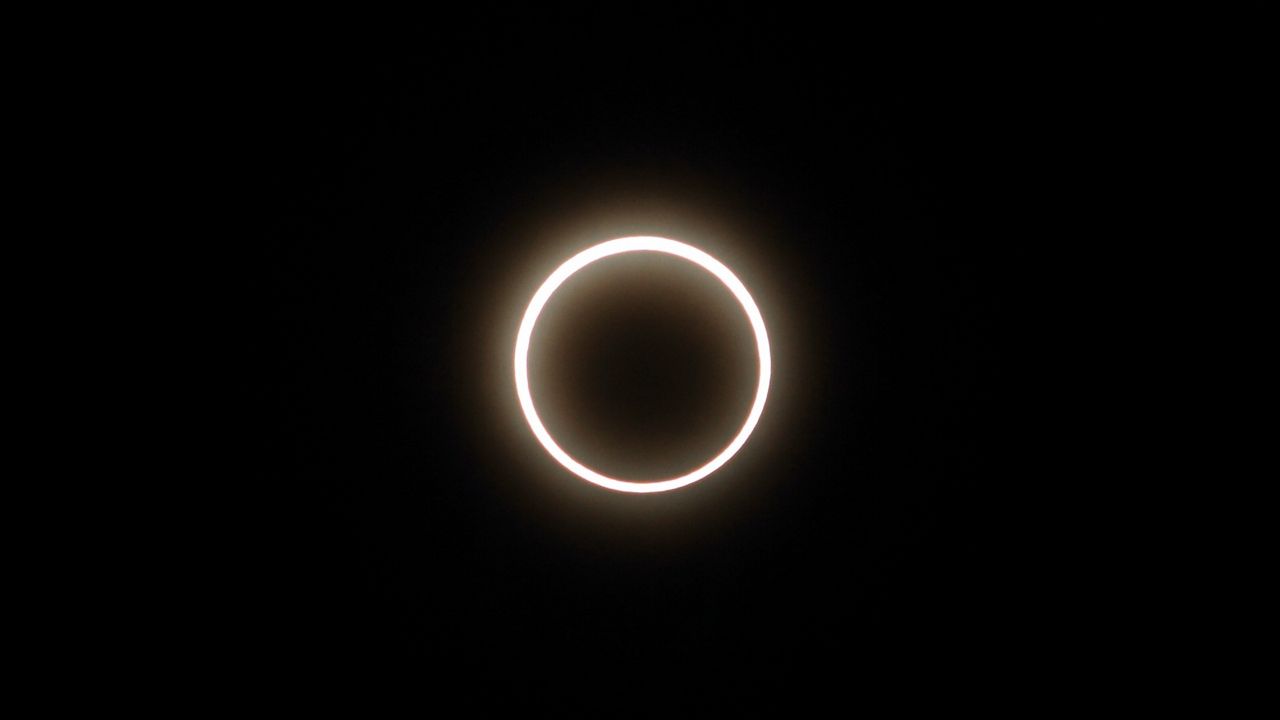The celestial stage is set for an awe-inspiring phenomenon across the North American skies. An upcoming annular solar eclipse is poised to grace skygazers just two months from now, on Oct. 14, 2023. Mark your calendars and set your alarms for this extraordinary event that promises to captivate across the United States.
The eclipse will cross much of North, Central and South America, marking the first eclipse across the nation since 2017. The event will begin when first contact begins at 9:13 a.m. PT along the coastline of Oregon, ending as the moon moves out over the open Gulf waters off the coast of Texas at 12:03 p.m. CT.

For the first time since the total solar eclipse of 2017, the entire nation will witness at least a partial eclipse during this event. But for a few lucky observers within the path of this remarkable event, the annular eclipse will be a sight to behold. Cities like Eugene, Ore.; Alturas, Calif.; Richfield, Utah; Albuquerque, N.M.; and San Antonio will all be treated to annularity, otherwise known as the "ring of fire" effect.
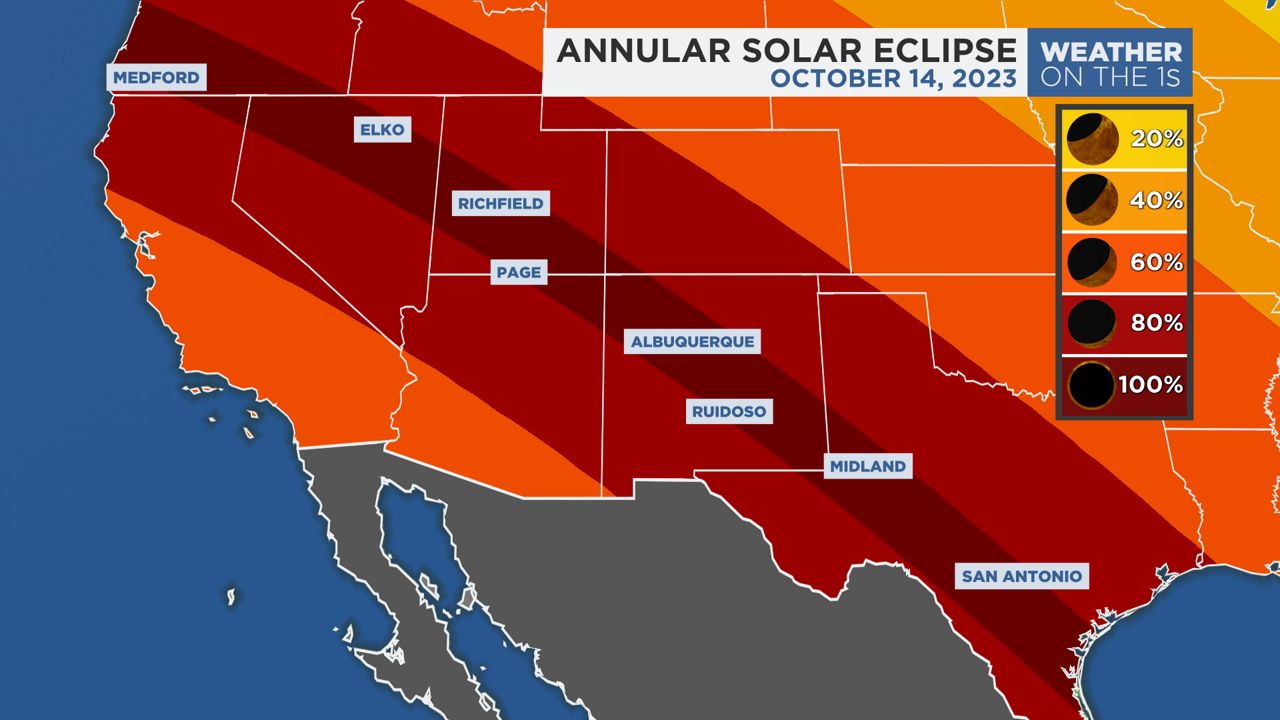
While both annular and total solar eclipses are captivating events involving the alignment of the sun, moon and Earth, they present distinct differences in their appearances. During a total solar eclipse, the moon completely covers the sun, casting a momentary twilight-like darkness and revealing the sun's stunning corona.
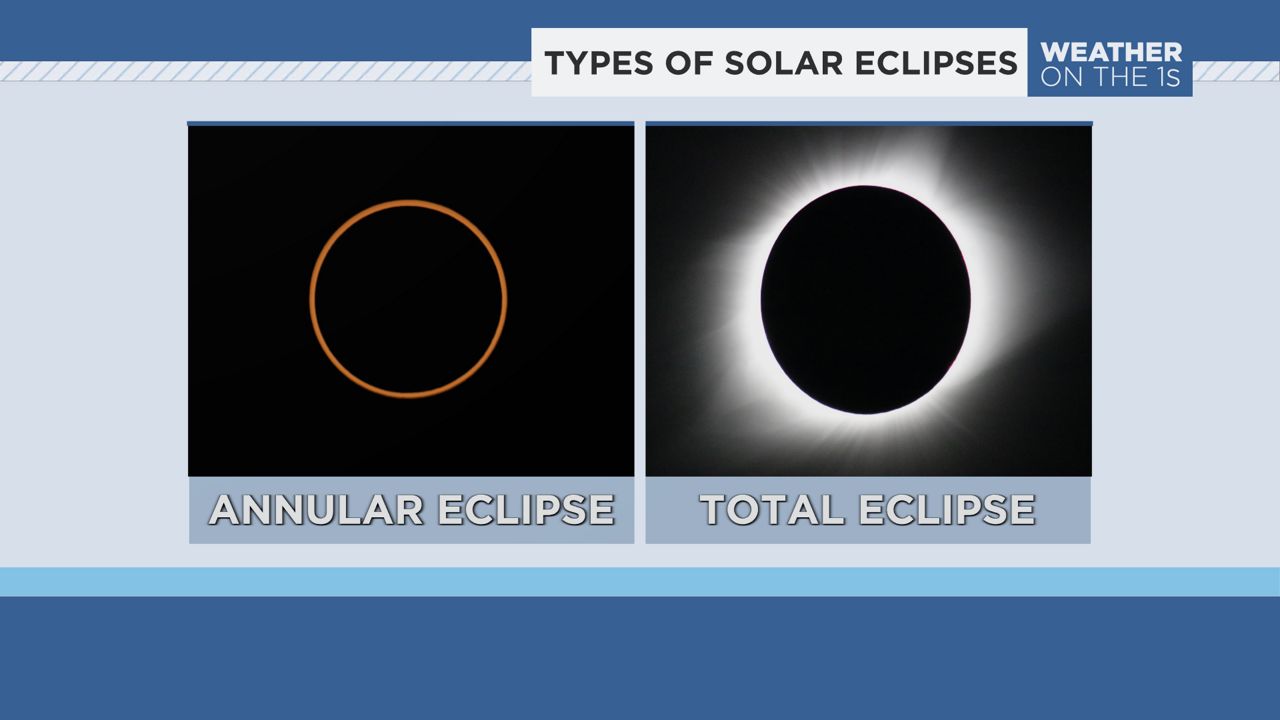
On the other hand, during an annular solar eclipse, the moon covers the central part of the sun, leaving a "ring of fire" effect around its edges. That’s because the moon is farther away from Earth, appearing smaller and unable to block the entirety of the sun.
As a result, the moon’s appearance will look like a very dark circular disc atop a much larger and brighter disc. This mesmerizing ring of sunlight is the hallmark of an annular eclipse, creating a unique and captivating visual that sets it apart from the total solar eclipse experience.
Ensuring your safety during this celestial spectacle is paramount. Under no circumstances should you observe the eclipse with the naked eye, as this can lead to serious eye damage. Be sure to use specialized solar viewing glasses or eclipse glasses to fully enjoy the event without any risk to your vision.

Moreover, if you're without proper eyewear, consider crafting an eclipse box viewer, a simple and safe method to witness the eclipse indirectly. You can look here for directions on how to create one out of household items.
Even during eclipses, it's important to also practice good skin safety. If you plan on being outside during the entire event, consider wearing sunscreen and bringing a hat to protect yourself from the UV rays of the sun. You can find more tips to protect yourself from the sun here.
For avid skywatchers, North America is entering what's known as a Golden Age for Eclipses. After missing out on dozens over the past several hundred years, the Earth, moon and sun are now entering an alignment that will bring more eclipses to the North American continent more frequently.
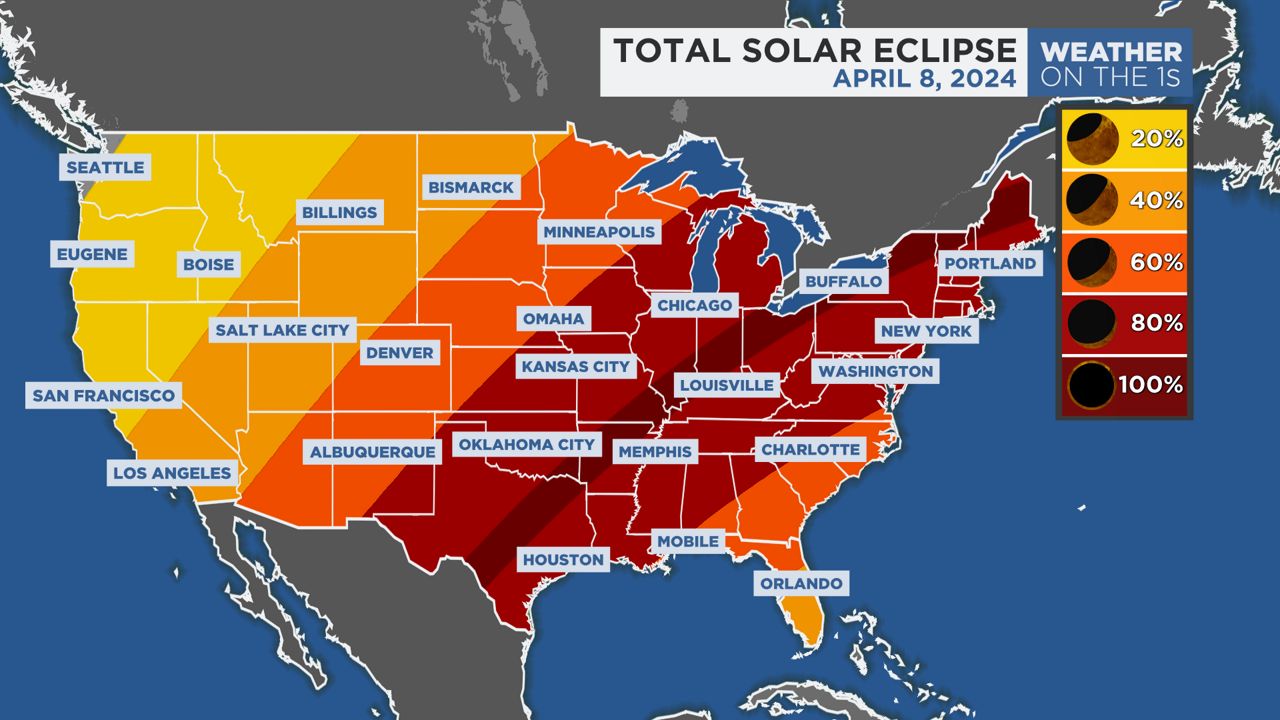
And you won't have to wait long. The next total solar eclipse is set to move across America on April 8, 2024. That eclipse will begin as the moon makes first contact with the sun over the south Pacific Ocean, moving over the North American continent, exiting the northern tip of Maine.
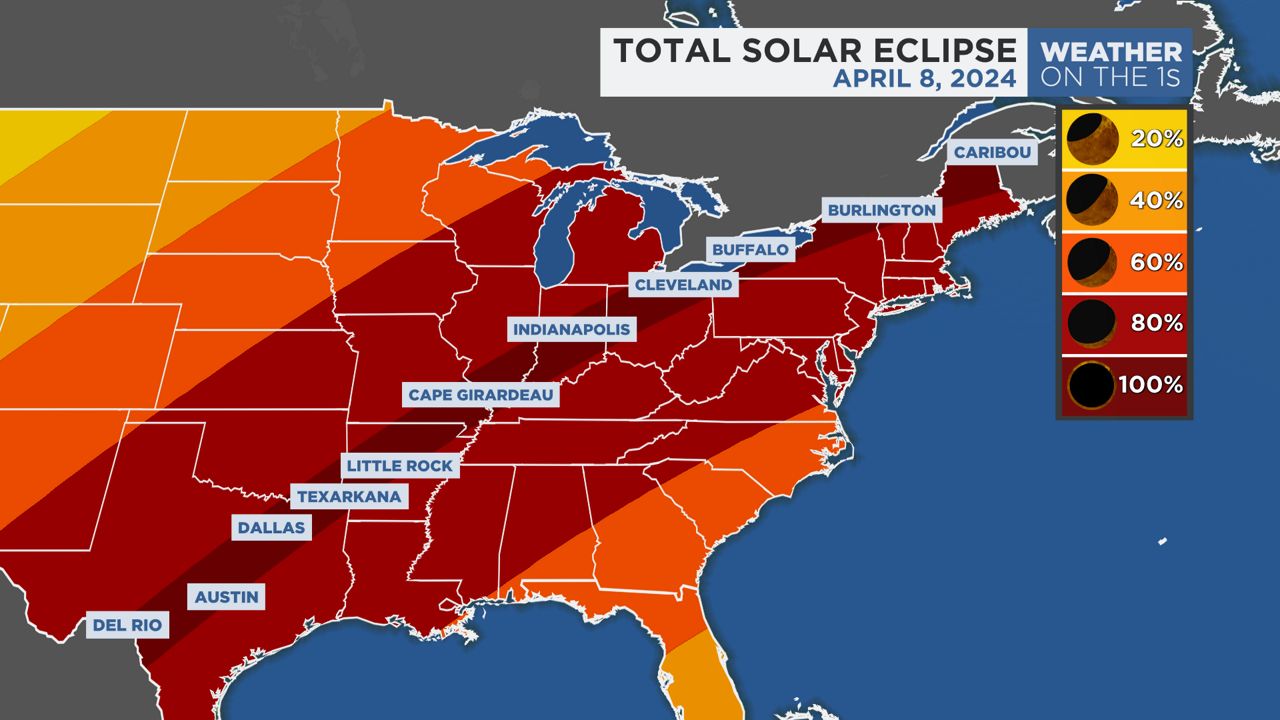
Unlike this year's annular solar eclipse, totality will occur with this one, casing moon's shadow down on earth and providing a moment of darkness to cities within the totality range. Cities like Dallas; Little Rock, Ark.; Paducah, Ky.; Cleveland; Buffalo, N.Y. and Caribou, Maine will be some of the many able to experience this once-in-a-lifetime event.
For those across the Southeast, don't worry. You too will have a total solar eclipse, but you need to wait just a bit longer. The next major eclipse following 2024 will be a cross-country total solar eclipse that will begin in Northern California and exit over South Florida.
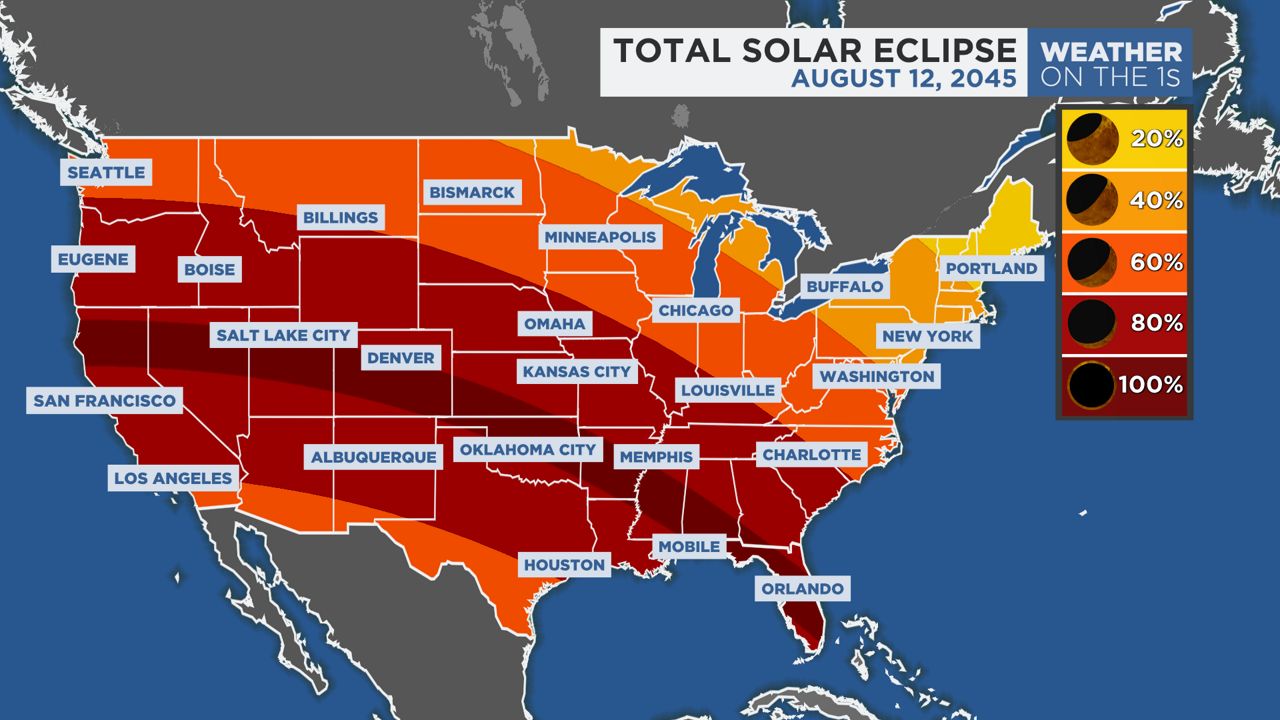
Cities including Orlando and Tampa, Fla.; Jackson, Miss.; Denver; and Salt Lake City will be able to enjoy the totality of that event. In fact, Port St. Lucie, Fla. will be the luckiest in the nation, experiencing the longest moment of totality during the event at six minutes and seven seconds.
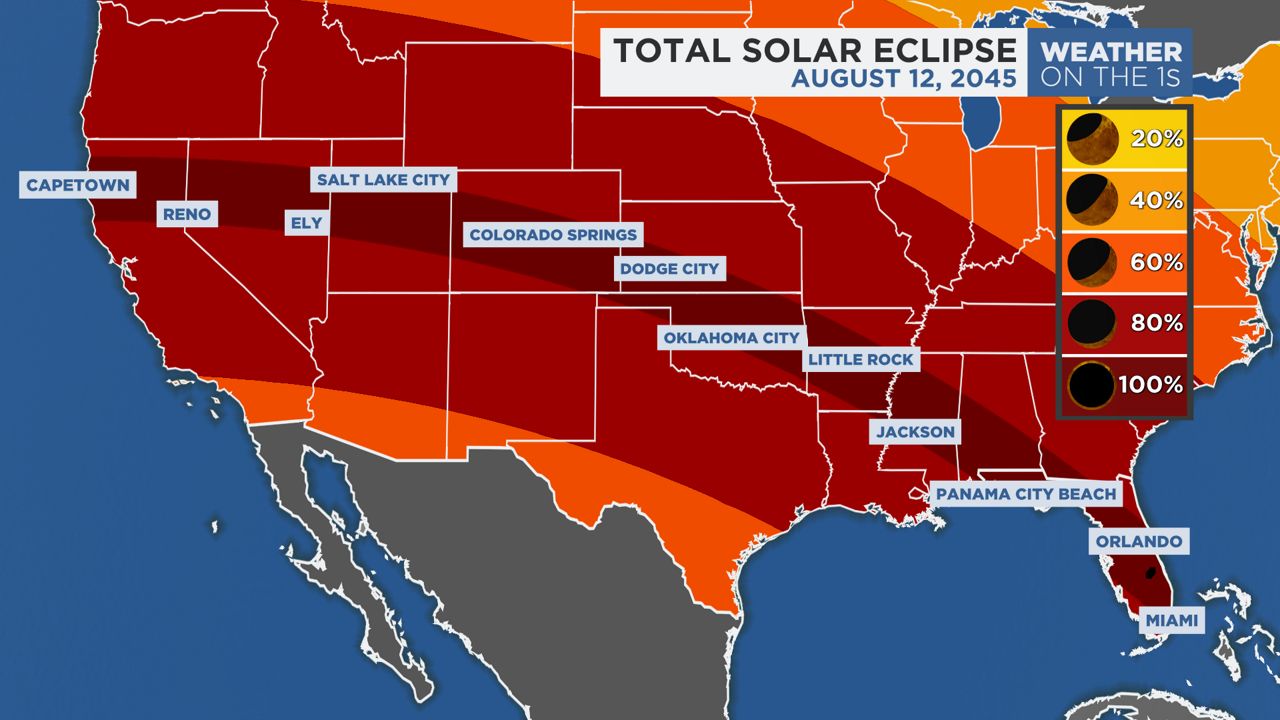
Our team of meteorologists dives deep into the science of weather and breaks down timely weather data and information. To view more weather and climate stories, check out our weather blogs section.




